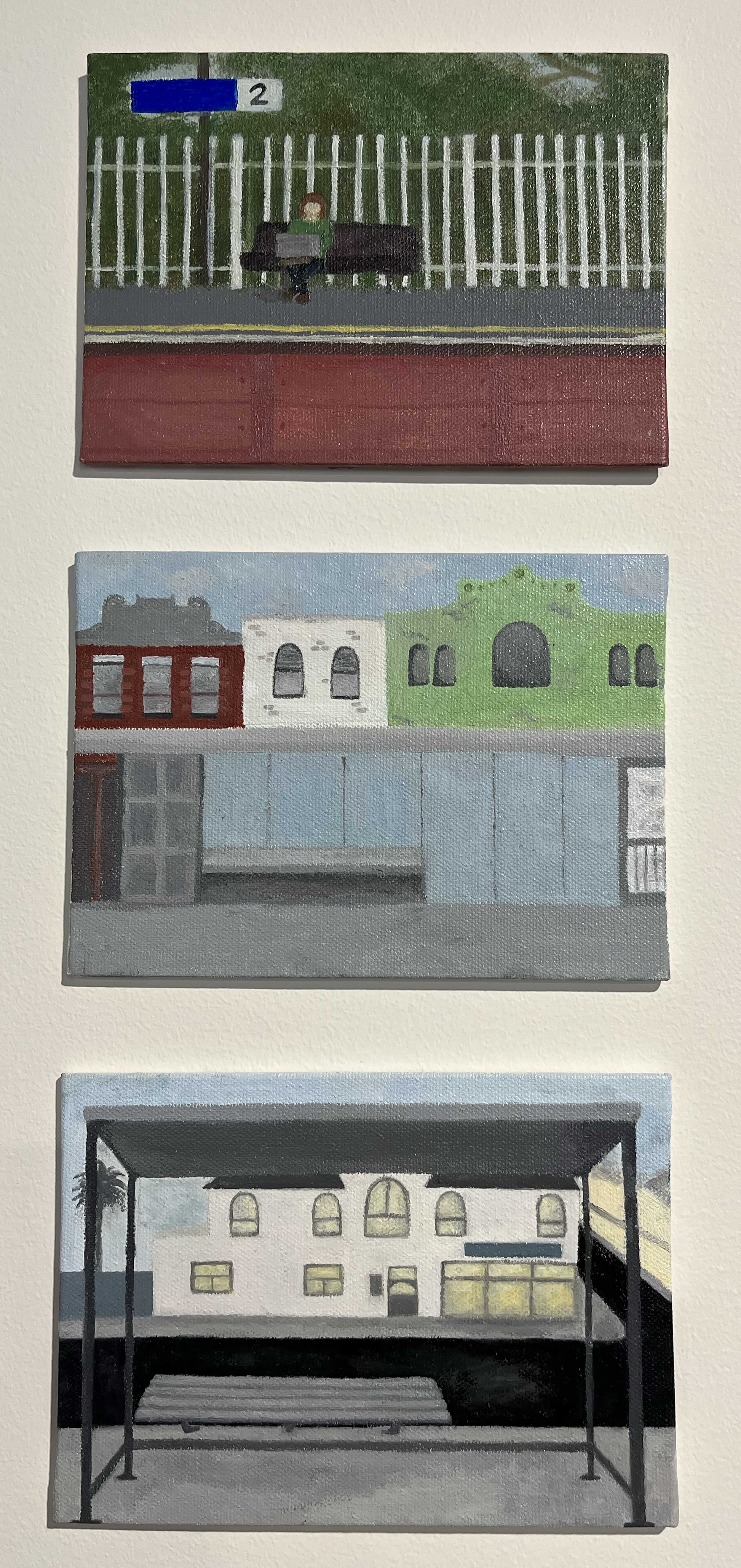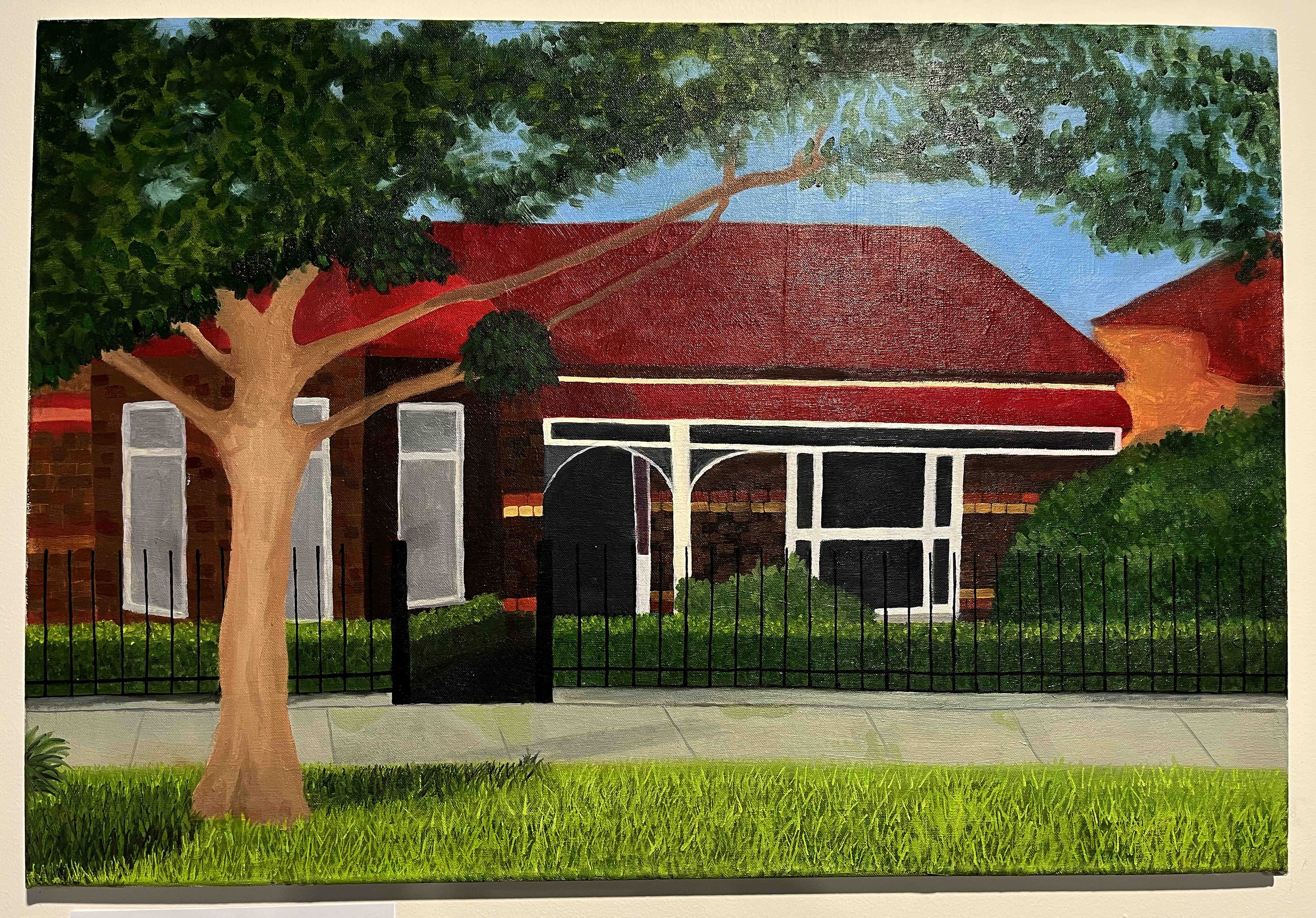IB VISUAL ARTS 2023
Amelie Mentiplay
In my exhibition I am exploring the concept of Transport (Public Transport) and the liminal time spent between two locations. I wanted to capture three main aspects of transport being: connectivity, protection and community. These ideas are linked through the presence of modes of Public Transport throughout my exhibition and a coherent colour scheme drawn from the colour representing PTV (Orange: Bus, Blue: Train, Green: Tram). The style of each artwork also remains simple and minimalistic emulating the PTV app and advertisements to solidify the consistent link to public transport.
My motivation for creating an exhibition surrounding public transport was developed from my consistent use since a young age. I have many memories of catching public transport as a child and as I grew older it began to represent my independence, reducing my reliance on my parents for transportation. PTV was also integral to my knowledge of where I lived and how to get around local geography, knowing most of my tram, train and bus routes by heart and using them as signposts to what suburb I’m in or which suburb is the next along.
Artists that inspired my artworks are Jenny Watson and Howard Arkley for their representations of urban Melbourne and the suburbs. I really admired their use of colour and depictions particularly of houses as their subject matter. Edward Hopper’s artworks also heavily inspired the energy and sense of quiet in my artworks. I was really drawn into his compositions and their intimate depiction of a moment in time and as a result tried to emulate similar qualities in my artworks.
My artworks were influenced by the idea of liminal time and the three main concepts. Working with the exhibition space provided I wanted my exhibition to appear in a circular nature, as it’s experienced it feels like a journey itself. This is evident through two artworks. The centre is a painting named ‘Home’. It is the direct centre of my exhibition and the largest artwork, conceptually it is about always leaving and returning to one place, being home. The second directly connects and is called ‘Leaving-Arriving’. This is a video based on my doorbell camera for several months which depicts me coming and going from my house in video. I made my exhibition interactive for the audience through Looking through a Window where they must peer through a cut out train window to view the works, physically drawing them into my exhibition.
The rest of my exhibition explores liminal time spent inside of public transport, only two other paintings occurring from a perspective outside of PT, one being a map, and the other from right outside a train. Protection and community are often interlinked ‘Crowded community’ and ‘People we meet’ are both directly interacting with the idea of community of Public Transport and the new environment people are put in when they enter the liminal state in transport. This is connected directly to ‘Snippets in time’ and ‘Looking through a Window’ which explore the superficial and fleeting, yet insightful impressions of people and their lives that are only obtainable inside of the liminal space of Public Transport. All of my artworks have similar aesthetic qualities of busyness, togetherness and yet, solitude. They all involve blues, reds, yellows and pastels making the exhibition overall cohesive and binding the different mediums together, consistent with my illustrative style.
I have used oil paint, acrylic, made one paper-based collage artwork, one illustration using pen and a video. I chose oil paints as my primary medium because I enjoy the results and quality of oil paints and made use of the longer drying time to add details after painting the base colours. I made one acrylic painting because it was a very simple design and decreased the amount of time I needed to make the artwork, also making it have a matte quality which suited the idea of the flat map. The collage was influenced by the clean simplicity I could achieve through cleanly cut paper and the repetition and pattern of the same colour pallet and simple style as my paintings.

Looking through a window
Collage
51 x 64cm
Often on public transport we see only a 2D version of the lives happening outside, this collage emphasises the second in time we experience, places we normally wouldn’t see and lives we’ll never really know happening outside of a bus/train/tram. This highlights our fake familiarity with the world outside of our regular transport routes.


Isolation
Oil on canvas
40.5 x 30cm
Covid saw the emptying of the PTV system, while everyone was locked away the community there once was of public transport was gone and left with an eerie silence. This oil painting highlights the isolation experienced if anyone needed to catch a bus, and the general emotional alienation the entirety of Victoria experienced though Covid.

Waiting
Oil on canvas
13 x 18cm (by three panels)
In contrast to the rest of my works waiting occurs externally from transport however forms the same liminal time between point a and point b. Those who catch public transport know the waiting often takes as long as the actual journey and the same connections can be formed in PT and while waiting for it.

Home
Oil on Canvas
56 x 82cm
As the centre of my life, Home is the centre to my exhibition. As the point I leave from and come back to, it is located centrally. My home is an inviting place, so I made the colours rich and warm to emulate the emotions I associate with it. The windows even in the shade have movement of some lighter and darker strokes swirling and the roof slightly washed out is to communicate that the home is lived in and loved.

Connections
Acrylic on Canvas
61 x 46cm
PTV provides transport that isn’t available on foot, this painting highlights the connectivity that we are allowed through the public transport system featuring the bus, tram, and train lines on just one portion of a map. It is centred around my local geography, tying in the locality of all my artworks and my personal familiarity with the area.

People we meet
Fine liner on Paper
17 x 19cm
There are always certain people you repeatedly see during public transport daily routines. Small and unacknowledged communities often form, with this you learn people’s faces and routines without really knowing them.

